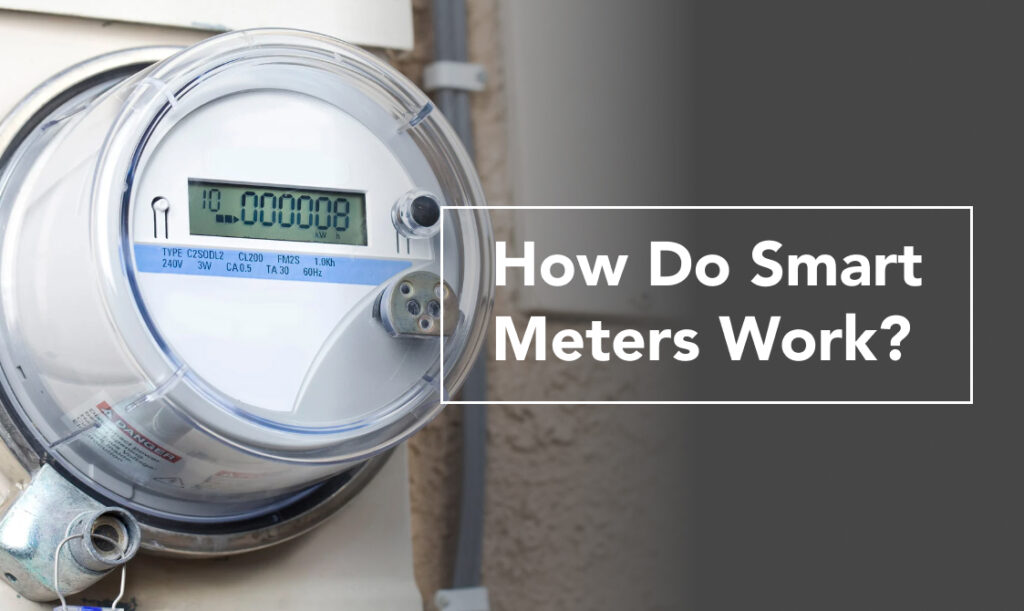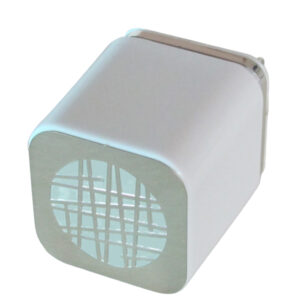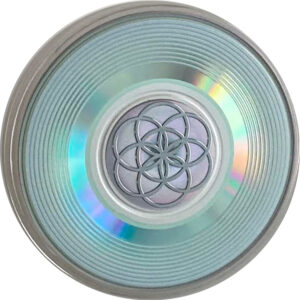Are smart meters harmful? That’s what many people wonder about the technologically advanced meters showing up in front of homes all across America. The short answer is, smart meter radiation can be harmful if placed close to a residence or workplace.
How Do Smart Meters Work?
A common smart meter concern is the electromagnetic fields (EMFs) emitted by smart meters and their harmful effects, often based on their potential health effects. These effects are often related to smart meters’ operation, which is based on the utilization of radiofrequency (RF) radiation, a form of EMF, for transmitting and receiving information with a smart meter antenna.
The naysayers argue that if you live in a home with a certain amount of RF exposure day in and day out, radiation from smart meters can cause health problems like headaches, fatigue, and sleep interference, a syndrome known as “electrosensitivity” or “electromagnetic hypersensitivity.” First, what exactly are EMFs, how do they stack up against other types of radiation, and where are they found in our lives.
EMFs Explained: Peeling Back the Invisible
Take a walk through any developed area and it’s likely you’ll pass a smart meter or two clicking away. Unlike the analog meters they replace, these shiny boxes are beacons of electromagnetic energy. They measure your electricity use in real-time and transmit this information wirelessly to your utility provider. It’s efficient and it’s smart — with these meters, a power company can manage demand, identify outages, and shape their services to meet our 24/7 needs.
The Debate: Smart Meters vs. Cell Towers
We’re all familiar with cell towers, those tall skinny structures that reach high into the sky. They broadcast radiofrequency (RF) signals, a type of non-ionizing electromagnetic radiation, over long distances to maintain a cell phone connection. RF signals can produce heating in biological tissue at high intensity, and that’s when health concerns can arise.
A relatively new comparison is smart meters, short stubby devices mounted to the side of our homes, quietly taking electricity readings. They use the same type of RF signals to transmit information directly to the utility company.
But radiofrequency radiation from smart meters is often lower in power than cell phone usage and towers, and they’re used much closer to our daily environment. Much of the public concern about these devices stems from the fact that they’re on of most of the time, and they’re being placed closer to homes than most people realize.
EMFs in the Home: It’s Not Only Smart Meters
Inside your home, the EMF landscape is quite active. The blender, the fridge, the Wi-Fi router, they all generate an electromagnetic field, layering on top of that invisible fabric. Smart meters are yet another thread in the quilt, and for some people, it’s becoming an intricate and complicated pattern. This is especially true in the research around cancer risk and other long-term ailments. The theory is accumulation — the sum of exposures that can pile up and potentially disrupt our bodies.
The Mesh Network
Smart meters are part of an elaborate “mesh network.” A connected system where each meter is not only collecting its own data but also relaying the information of others. One meter picks up a data packet and sends it to the next in line, like hot potato with wireless tech, until the utility central system gets the data. It’s meant to be redundant and self-correcting, rerouting around any meter that’s out of commission or where the signal may be obstructed.
But there’s a saying about beauty being more than skin deep. Each smart meter acts as a mini-repeater, picking up the RF signals more often if not necessarily stronger. Opponents of smart meters don’t want the constant ebb and flow of energy usage across a neighborhood, each home a pulse in the process. Supporters tout the low-power output of the transmissions and the efficiency of the network. As this grid becomes increasingly interconnected, how it works and what it means is critical to the conversation about its role in our society.
Is There Anything You Can Do to Shield Yourself from EMFs?
Wireless smart utility meters are quickly becoming the standard in electrical grids and with them has come a demand for EMF protection products. These vary from paints and clothing that shield against EMF hazards to personal devices that counteract non-ionizing radiation effects. Studies show that these types of products can help create a shield around your home, whereas others attempt to balance the EMF frequencies to alleviate any harmful effects. But is there any science behind it? Studies vary but some show that there are products and techniques which help reduce EMF exposure.
Make an Educated Decision: What Should You Do?
EMFs don’t have to make living in a technologically advanced world a tightrope walk. Basic precautions can help reduce exposure, including maintaining distance from EMF-emitting devices, using a wired device instead of a wireless option, and shutting off equipment when it’s not in use. When it comes to smart meter installation, knowledge is your greatest tool. Know the utility company policies and procedures for installing smart meters, and feel free to ask questions about the RF output of the meters. Some utility companies have alternative designs or opt-out options for concerned residents so you can make an educated decision that’s best for you and your family.
The Future of Smart Meters Looks Bright
It’s likely that smart meters are here to stay, with forecasts including home automation and efficiency as key drivers for the devices. They’re expected to play a major part in the growing trend of smart homes, where appliances and the grid communicate to optimize energy consumption. With that future, comes a responsibility for radio frequency safety and technological innovation. Meters are being designed with lower EMF output and higher security standards to ensure the devices can perform their convenient function without health or personal sacrifice.
Related Article: Addressing Privacy Concerns with Smart Meters.
Be Smart about Staying Safe in a Smart World
To shield yourself from EMF exposure, there are some novel products that can mitigate the effects and impact of electromagnetic fields in our personal environment. Two unique devices, the EMF Adapter and the Radiant Room, take different approaches to creating a protective barrier. Both are at the leading edge of technology to counteract the effects of EMFs in our surroundings and provide peace of mind for health advocates.
EMF Adapter: A Plug-in Whole-House EMF Protector
One of the most intriguing ways to counteract the effects of electromagnetic fields (EMFs) in our homes is the relatively new EMF Adapter. This unique device plugs into any standard electrical outlet and claims to mitigate radio frequency radiation in your entire house. It works via the building’s electrical system to create an EMF protected environment by reducing the electrostress on the body from a myriad of devices including wireless smart meters, wireless routers, mobile phones, computers, and other high frequency, high intensity electronic equipment.
Radiant Room: A Handheld EMF Protector
For those who need a portable EMF protection product, the Radiant Room provides a flexible and convenient solution. This small device provides EMF protection for an area up to 400 square feet, which is ideal for smaller apartments, single rooms, or office spaces. Unlike the EMF Adapter, which is designed to be plugged in and leave the protection to the electrical system, the Radiant Room is easily transported to provide focused protection where you need it. It works by interacting with the existing electromagnetic radiation in the area it’s used and effectively reduces its strength and impact. Ideal for mobile users and those who want to increase their EMF protection in particular spots around the home or office, the Radiant Room provides a way to help alleviate environmental health issues and other concerns from EMFs.
FAQs
Are there harmful levels of radiation from smart meters?
No. The World Health Organization makes no mention that a smart meter increases risk of radiation or RF energy exposure. They emit radio frequency (RF) radiation like a cell phone or Wi-Fi signal but at much lower levels than both are allowed by international health agencies.
Can smart meters have long-term effects on my health?
At this time, there is no evidence that smart meters have long-term, adverse health effects. There are studies in place to monitor the health impacts of smart meters in the future but they are considered safe from a health perspective and do not have any long-term negative health implications at this time.
Are smart meters harmful for children or pregnant women or the elderly?
No. There is no mention of harmful effects for children or pregnant women or the elderly from smart meters. The low level RF emissions are considered safe for all populations from a health perspective.
Are smart meters safe compared to other household devices?
In general, smart meters are as safe as other household devices. The RF radiation output is generally lower than cell phones, microwaves, or Wi-Fi routers, and they are within safety guidelines for public health.
What do EMF protection products like the EMF Adapter and Radiant Room do – really?
EMF protection products like the EMF Adapter and Radiant Room claim to counteract or balance the electromagnetic fields in your home. The EMF Adapter plugs into any electrical outlet and interacts with the building’s electrical wiring to mitigate EMFs in the entire house. The Radiant Room is a handheld device that creates a balanced and reduced EMF environment by interacting directly with the fields in its immediate area.
Is there any science behind EMF protection devices? Do they work?
There are studies that show some materials can shield or offer reduced exposure from electromagnetic fields but there is less evidence directly supporting specific wireless devices. Consumers should seek peer-reviewed studies and be wary of any claims that appear too good to be true. As science advances, stay educated and evaluate the evidence for yourself.







